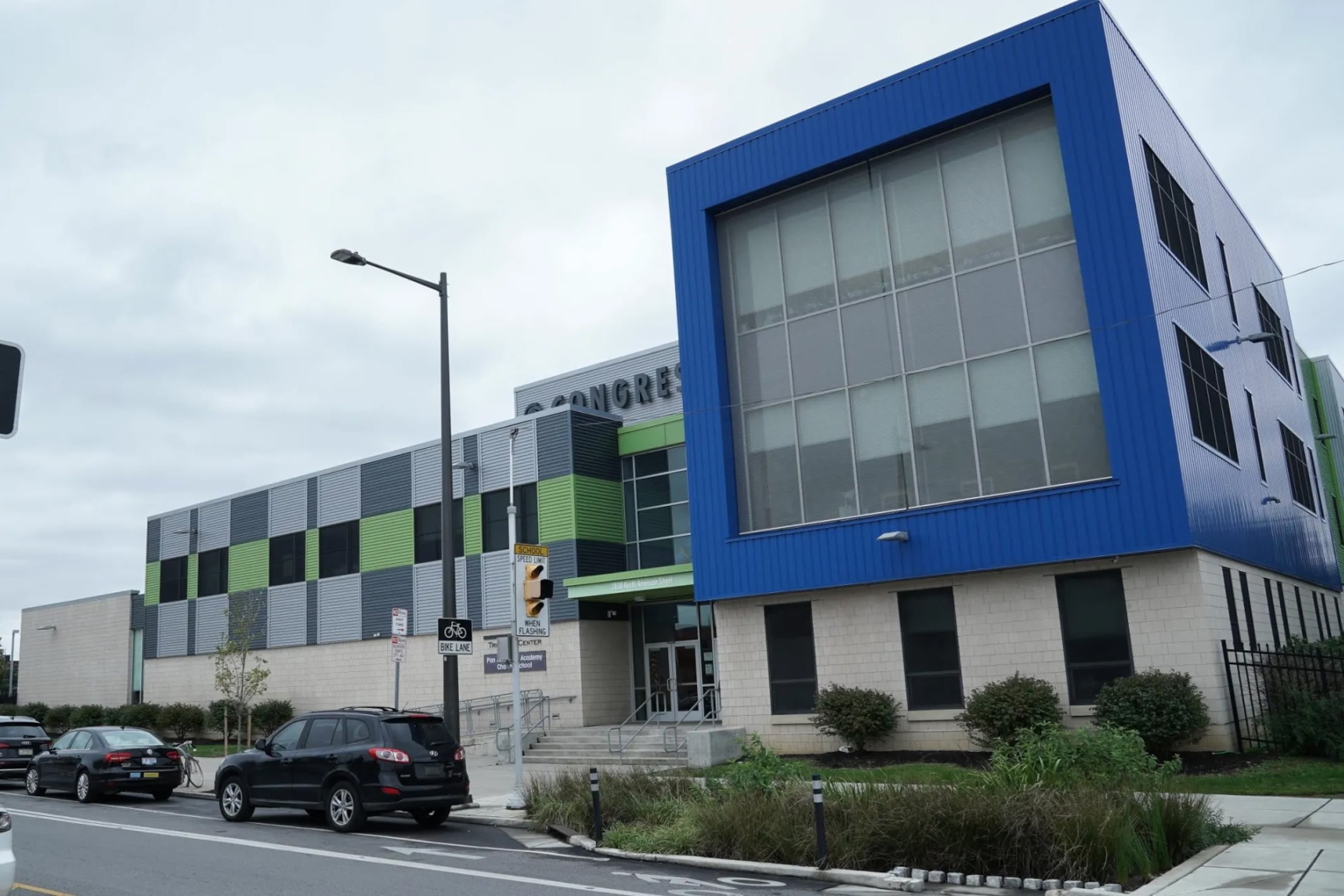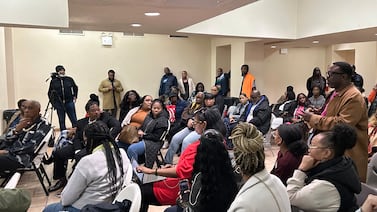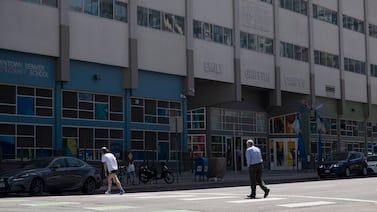Sign up for Chalkbeat Philadelphia’s free newsletter to keep up with the city’s public school system.
All four of Margarita Albino’s children have passed through the halls of Pan American Academy Charter School.
The Northeast Philadelphia resident, who is Dominican, was drawn to the school by its dual language program. Although Albino is bilingual, she says she feels more comfortable with Pan American’s staff, which is made up of predominantly Spanish-speaking Latinos.
“The school knows that it’s needed to keep [the heritage] alive in them,” she said, adding later, “They have no problem assisting me in Spanish.”
Latino families in Philadelphia say they’re choosing charter schools operated by Latino-led nonprofit organizations because the schools are able to fill gaps not filled by the school district. Several Spanish-speaking parents and caregivers told Chalkbeat that Latino-led charter schools are providing more cultural representation, language accessibility, and a tighter-knit community than their traditional neighborhood public schools.
The Latino population in Philadelphia has almost tripled since the year 2000, reaching about 16% of the city’s residents in 2020, according to the census.
Additionally, about a quarter of the roughly 197,100 students in the Philadelphia school district identify as Hispanic or Latino, according to district data. And in the 2022-23 school year, the district reported 17% of students were English learners, a 9% jump from the 2014-15 school year. Almost half of English learners came from Spanish-speaking homes.
Though the majority of Hispanic students in Philadelphia are enrolled in traditional district schools, Hispanic students comprise 18% of total charter school enrollment, according to a report by advocacy group Children First. The group also notes Hispanic students make up the largest number of Philadelphia-based cyber charter students with 1,478 students, or 80% of total cyber charter students in 2023.
In the 1970s, Philadelphia public schools were trailblazers for bilingual education. The district oversaw a pilot program for English as a second language and a Bilingual Institute to train and recruit teachers. It also opened a bilingual school, as well as bilingual programs that reached about half of the burgeoning Puerto Rican student population.
But the programs’ budget, which was supported by federal funding, eventually dwindled. Today, just eight out of 218 district schools offer Spanish-English dual language programs.
There’s also the issue of staff representation and educators’ ability to connect to Latino families. Only 4.4% of teachers in the district are Hispanic, according to a 2022 Research for Action report. A lack of bilingual and culturally competent staff can weaken parent-teacher communication and impact students’ academic success, according to research.
The school district said it’s aware of these gaps and is working to address them by hiring more Spanish speaking bilingual counseling assistants and teachers.
Nathalie Nérée, the district’s head of special education and diverse learners, said there are plans to implement another dual language program in a public school. But she said the district would need more resources and community support, since dual language programs are “costly.”
Diana Garcia, principal of district-run Willard Elementary School in Kensington, said there have been several families that have left her school for Pan American Academy Charter School, which is in Fairhill and is run by Congreso de Latinos Unidos. Thirty-five students whose designated local public school is Willard attend Pan American, according to district data.
Garcia said one reason for this is the convenience of having their children across grade levels attend the same school. But she also said “there is more work to be done” when it comes to district staffing. She said she hired at least eight more staff members to accommodate Spanish speakers at Willard after becoming principal.
“If this school who has a 45% Latino population doesn’t have Latino representation to service those families, then we’re failing them,” she said.
‘You were encouraged to celebrate your child’s success’
There are at least four Latino-led charters in Philadelphia that advertise having a sizable number of Spanish-speaking teachers, as well as dual language programs for students.
The district’s recent enrollment data shows that 91% of students at Esperanza Academy and 84% of students at Pan American identify as Hispanic or Latino. At Eugenio Maria de Hostos Charter School in Olney run by ASPIRA Inc. of Pennsylvania, 86% of students identify as Hispanic/Latino.
Although the Latino-led charter schools embrace the Spanish language, they do not guarantee if any staff speak Portuguese, which is spoken by Brazilians, or indigenous Latin American languages like Qʼeqchi’ spoken by some Guatemalans; there has been an influx of these groups in recent years.
Glenda Marrero, principal of Hostos Charter School, says that parents are more involved when there’s faculty who speak the same language.
“They tend to come to more activities because they know they’re not going to miss out,” she said. “There’s nothing like sitting in a room and not understanding nothing, but people are clapping around you.”
Cesar Ríos, a bilingual guidance counselor for students in grades 4-8 at Hostos Charter School, said that he witnesses more “parental and familial engagement” at the school.
He said one example of the school’s work with Latino families involves helping undocumented children or family members who need academic or other support.
He also said not all Latino students come from Spanish-speaking families, and that Hostos prioritizes teaching students about Latino “cultural heroes that might not otherwise be addressed let alone highlighted at another school.”
Farrell Elementary school teacher Angelee Rivera said her daughter transferred to Esperanza Cyber Charter School for her junior year of high school.
Rivera, who is Puerto Rican, said she felt the charter school, which is run by the local Hispanic-focused nonprofit Esperanza, embraced the Latino community. She was especially touched by remarks made by the CEO of Esperanza, the Rev. Luis Cortés, Jr., who is Latino, at her daughter’s graduation.
Cortés Jr. encouraged families to “turn up” and loudly celebrate their students’ achievements: “‘Our kids, they go through so much in their life just for being Black and brown and they survived the pandemic. … When your child’s name is called I want you to show out!’”
Rivera said Cortés Jr.’s words reminded her of an incident at the Philadelphia High School for Girls that occurred around the same time as her daughter’s graduation. Officials at Girls High withheld some students’ diplomas during the graduation ceremony because their families cheered loudly as their names were called.
“You have a school like Girls High, if you dance across the stage to show that you’re proud of yourself, you’re kind of punished,” Rivera said. “And yet in a school that is about community and is about the Latino community specifically, you were encouraged to celebrate your child’s success.”






